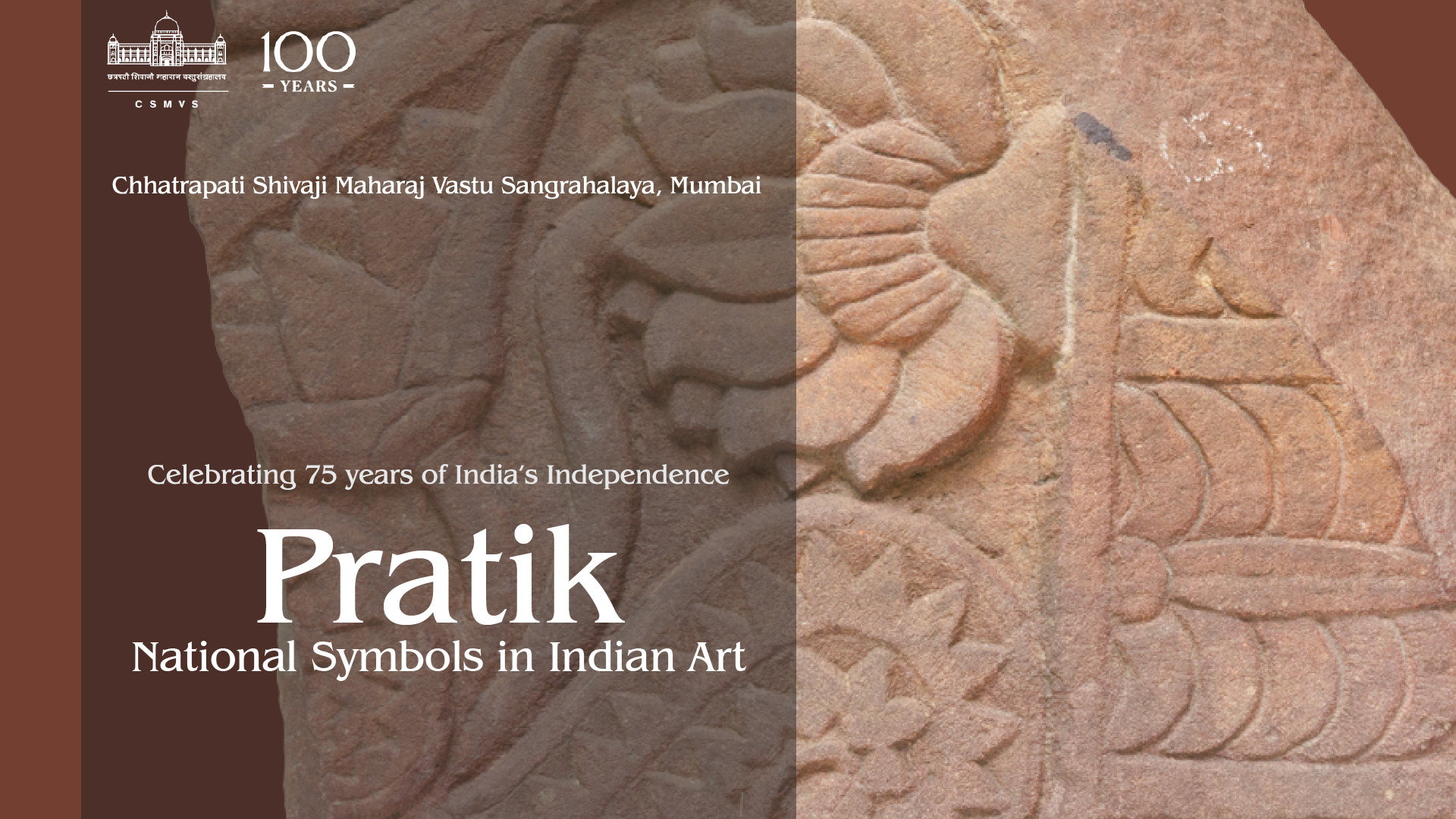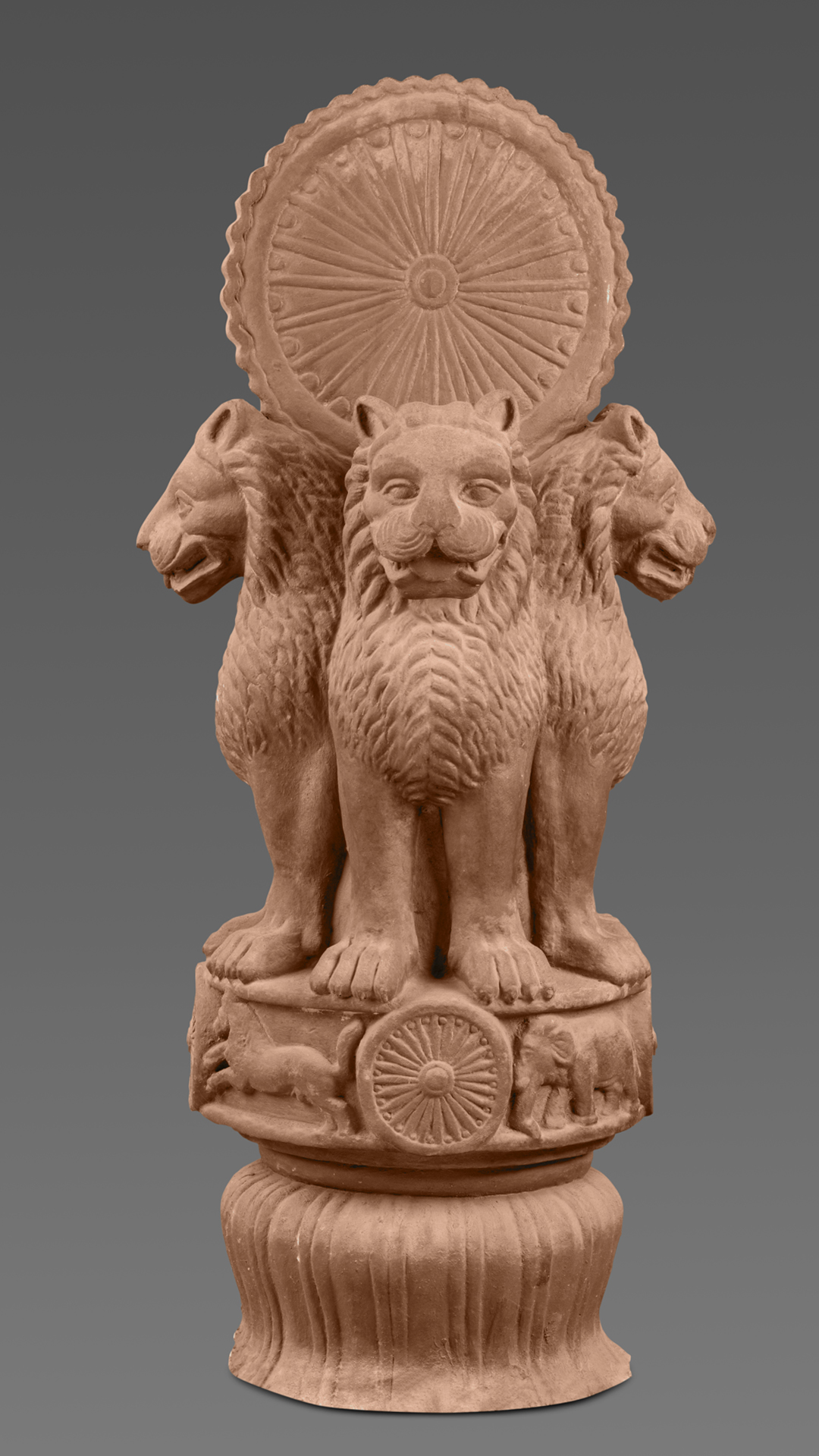Pratik
National Symbols in Indian Art
On 15th August 2022, India marks its seventy-five years of Independence. India has come a long way from the tryst with which we began our freedom, on that historic night in 1947, and therefore it is an occasion for the nation to celebrate this momentous occasion under the befitting banner of Azadi Ka Amrut Mohotsav. The CSMVS too is commemorating this occasion by curating this exhibition on the national symbols of India from our collections. India – a land with an extraordinary rich history and even more extraordinary diversity of its land, flora, fauna, people, religion, language etc. and its vibrant art and culture – has a variety of national symbols, which represent a host of objects that paint a unique identity about the country’s sensibilities. These Pratiks are symbolic representations of the cultural identity and rich natural resources of the nation each depicting a certain virtue that exemplifies the distinctive characteristic of our country. This rich and diverse heritage of India is a result of assimilation of cultural influences through generations. Accordingly, a number of national symbols have been designated to be of national importance. These symbols, which have been chosen after careful deliberation, infuse a sense of pride, patriotism, and oneness in every Indian’s heart.
Tricolour or Tiranga
The Indian national flag – the Tiranga – evokes a unique sense of profound connect and belongingness which every Indian has with the national flag in whose honour and dignity our military brothers are prepared to make even the supreme sacrifice of their life and the pride with which sportsmen sport the national flag, while representing our country, evokes a sense of exemplary pride and honour.
The Tiranga is a horizontal tricolour flag – 2:3 ratio of width to length – with a saffron (kesaria) band on top, a white band with a navy-blue wheel (chakra) in the centre and green band at the bottom. The saffron colour represents the strength and courage of the nation, the white band represents peace, and truths, and the blue Dharma Chakra with 24 spokes (Ashoka chakra – Wheel of Law) represent constant movement and progress. The green band represents fertility, growth and auspiciousness of the nation.
National Anthem – Jana Gana Mana
The national anthem of India, Jana Gana Mana, – written in Bengali by rashtra kavi Gurudev Rabindranath Tagore – whose Hindi version was adopted by the Constituent Assembly as the national anthem on 24th January 1950. It describes the national heritage and its rich landscape. It is a moment of pride for every Indian when the national anthem gets played out on different occasions to infuse patriotism.
National Song – Vande Mataram
Vande Mataram song was composed in Sanskrit by Bankimchandra Chattopadhyay. It was a part of his famous novel Anand Math (1882). The song was a source of inspiration to Indians in their struggle for freedom. On 24th January 1950, the President Dr. Rajendra Prasad stated in the Constituent Assembly that the song Vande Mataram has played a historic part in India’s freedom struggle, and shall be honored equally with Jana Gana Mana, the national anthem, and will have equal status.
National Emblem – Lion Capital
The Indian national emblem is an adaptation of the Sarnath Lion Capital of the Maurya King Ashoka. The capital depicts four lions, standing back-to-back, mounted on a circular abacus. Below these are sculptures in high relief depicting an elephant, a horse, a bull and a lion separated by intervening wheels over an inverted bloomed lotus. These four animals represent the four directions viz. elephant (east), horse (south), bull (west) and lion (north). The four lions, standing back-to-back, signify great power with a common source of energy. The slogan (Suvakya) of Satyameva Jayate in Devanagari is written at the bottom. The national emblem was adopted by the Government of India on 26th January 1950.
National Bird – Peacock
India is a geographically vast and diverse nation, full of rich fauna and flora. The peacock is a magnificent bird adorned with spectacular colours. It is a symbol of grace and beauty and is seen across the country. In 1963, the peacock was declared the national bird of India because of its religious and legendary involvement in Indian traditions.
National Animal – Tiger
The Royal Bengal Tiger is a majestically beautiful striped animal with that trade mark yellow and dark colour furs. It was found in abundance in India until reaching a stage when this majestic animal was facing existential crisis. Courtesy the extraordinary conservation efforts of the people of India, the tigers have begun to thrive in Indian jungles, particularly in the Tiger Reserve forests. Tiger symbolizes the power, strength, elegance, alertness, intelligence and endurance of the nation. The tiger was adopted as the national animal by the Indian Board for Wildlife in 1972 in place of the lion. It was selected as the national animal because of its wider presence in the country.
National Flower – Lotus
The Lotus or Padma is a sacred flower which is regarded as an auspicious symbol in Indian culture. It occupies an irreplaceable place in the art and mythology of ancient India and thus, was chosen as the national flower of the country. The lotus symbolizes purity, divine beauty, and is often used as a simile to describe someone with pure and delicate attributes. Lotus emerges from muddy water and blooms sparkling clean. This phenomenon symbolically represents spiritual awakening. Several Indian divinities are shown either holding a lotus or seated on lotus seat. It was adopted as the national flower on 26th January 1950.











